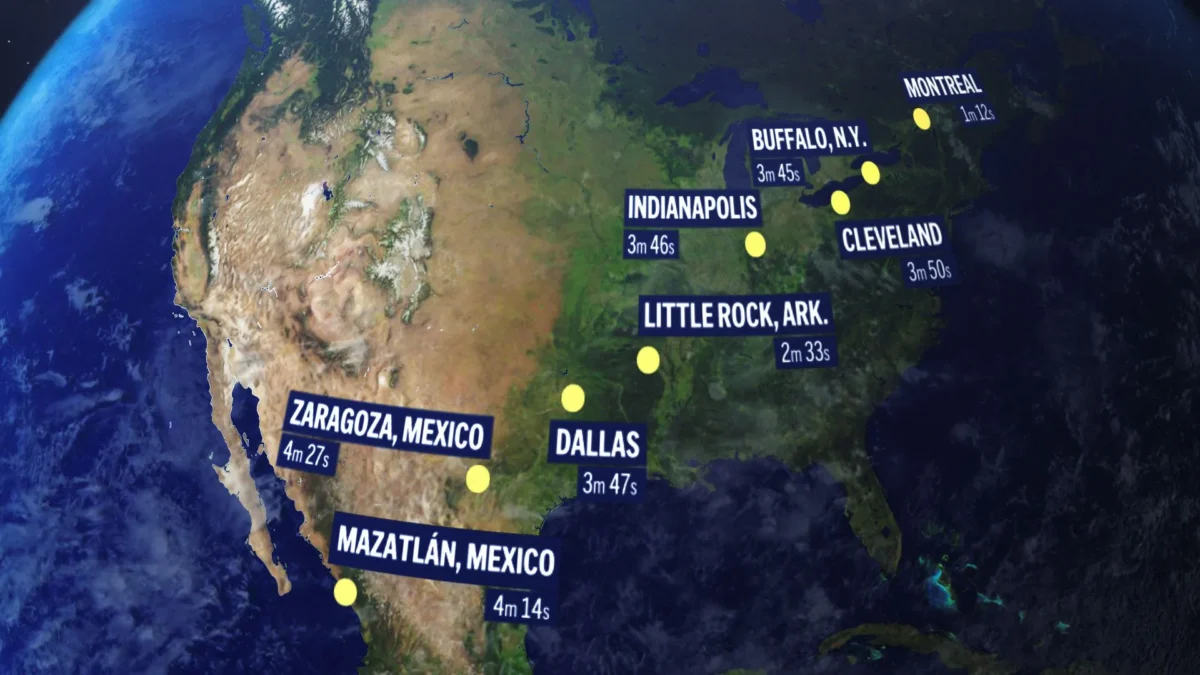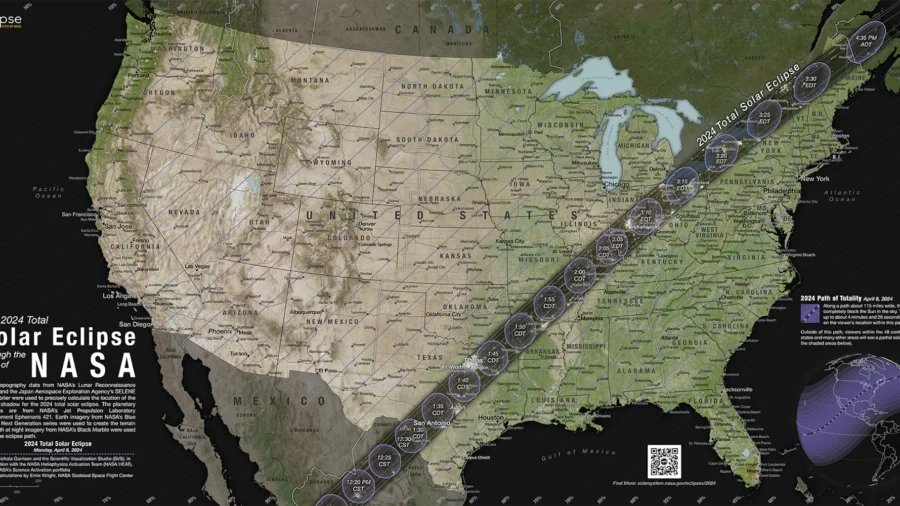Some researchers and NASA scientists warned that the solar eclipse path of totality Monday may be subject to a slight change.
The reason why, they explained, is due to calculations about the size of the sun. Researcher John Irwin has recently published a new map that included the updated path for the eclipse, reported Forbes, drawing reactions from several NASA scientists.
“By accounting for the topography of both the moon and the Earth, precise eclipse prediction has brought new attention to a tiny but real uncertainty about the size of the Sun,” NASA Heliophysics scientist Abbey Interrante told the Nexstar news agency over the weekend.
Luca Quaglia, a collaborator with Mr. Irwin, told the wire service that older eclipse calculations use a solar radius of 959.63 arc seconds. But Mr. Quaglia said it may be too small.
“Measurements and observations in the last decade have demonstrated that this value is slightly too small,” he told Forbes, adding that Mr. Irwin uses a solar radius of 959.95 arc seconds, which, according to the Forbes article, will cut about 2,000 feet from the path of totality’s edges.
Another NASA scientist also made note of the potential change.
“Calculations that use a slightly larger radius for the size of the sun yield an eclipse path that is slightly narrower,” Dr. Michael Kirk, a NASA research scientist, told the Thrillist website on Wednesday. “This difference would only affect cities on the very edge of the path of totality, where blanket predictions are difficult, regardless.”
He added that “a few city blocks one way or the other could mean 20, 10, or zero seconds of totality.”
The zone of totality for Monday’s eclipse may also be impacted by “uncertainty in the Earth’s rotation,” he told the outlet.” That’s because “traveling towards the center of the path of totality—even a mile or two—will quickly increase the length of totality that people can see,” Mr. Kirk said.
Weather Forecast
Clouds are likely to spoil the view of the total solar eclipse in Texas and other areas along the path in the United States, according to forecasts issued this weekend.
Meteorologists this weekend are fine-tuning their predictions as spectators try to scope out the best places to watch the moon block out the sun for a few minutes.
The path of total darkness stretches from Mexico and Texas through Maine and parts of Canada. A number of major cities including Dallas, Indianapolis, Cleveland, and Buffalo are within the center of the eclipse’s path of totality, and they may see about four minutes of total darkness.
“Most of Texas doesn’t look that great for seeing the eclipse,” National Weather Service meteorologist Bob Oravec said Saturday.
The best spots to view the eclipse, according to National Weather Service forecasts, is from northeastern United States into northeastern Canada. According to the outlook for Monday, thunderstorms and rain are anticipated for much of Texas, spreading to western Pennsylvania.
“Severe weather” is forecast for portions of Oklahoma, Texas, southern Arkansas, and northern Louisiana. There is a chance of large hail, tornadoes, and severe wind gusts on Monday, it warned.
The weather agency noted that areas in northern Arkansas to central Indiana could have a good chance of seeing the astronomical phenomenon, “but this is an area of greater uncertainty due to the potential for high clouds.”
Clear or partially cloudy skies are expected in most of Pennsylvania, New York, and all of New England on Monday, weather maps show.
But clouds could also block the view in parts of Ohio, Pennsylvania, and New York, the weather service’s latest forecast showed. There could be a clear patch from northern Arkansas to central Indiana, but there’s still a lot of uncertainty about that section, Mr. Oravec said.

“If you’re going to get clouds, hope to get high clouds,” he said. “Higher clouds are better—you can see through them.”
Mr. Oravec himself made reservations for three three spots: He’s ditched Texas and Rochester, New York, opting to travel to Indianapolis from his home in Maryland.
How to View the Eclipse
If clouds don’t get in the way, viewers in the path wearing eclipse glasses will see the moon begin to slowly cover the sun until it is completely blocked, a period of darkness called totality, during which temperatures drop and the sun’s corona will be visible.
During totality when the sun is completely shrouded, it’s fine to remove your protective glasses and look with your naked eyes.
But before and after, certified eclipse glasses are essential to avoid permanent eye damage. Cameras, binoculars, and telescopes must be outfitted with special solar filters for safe viewing.
The Associated Press contributed to this report.
From The Epoch Times


